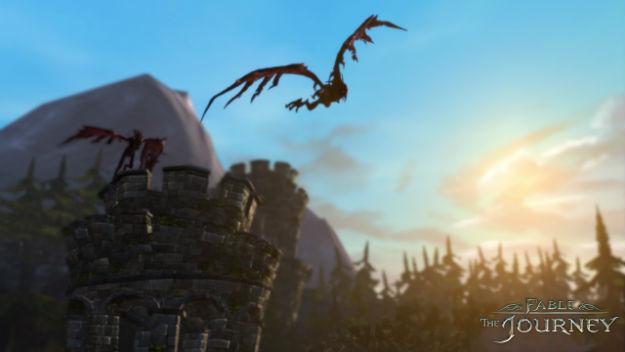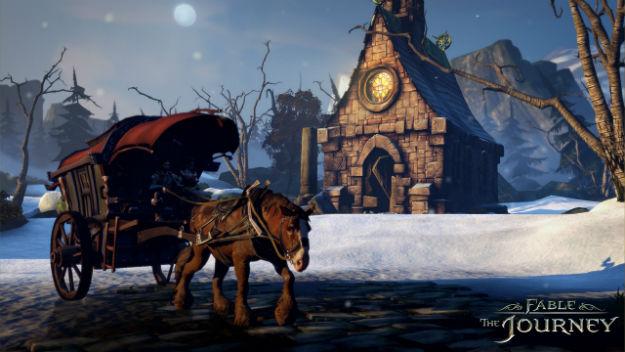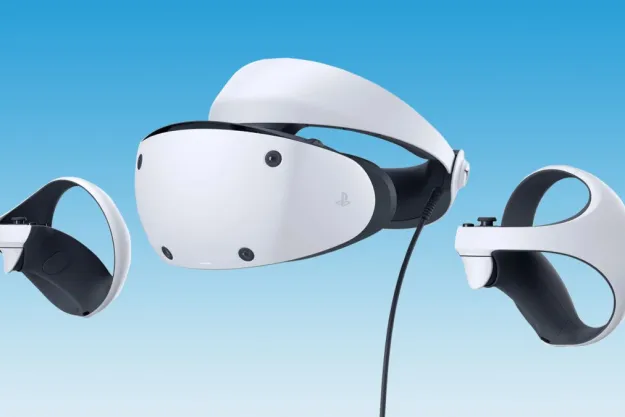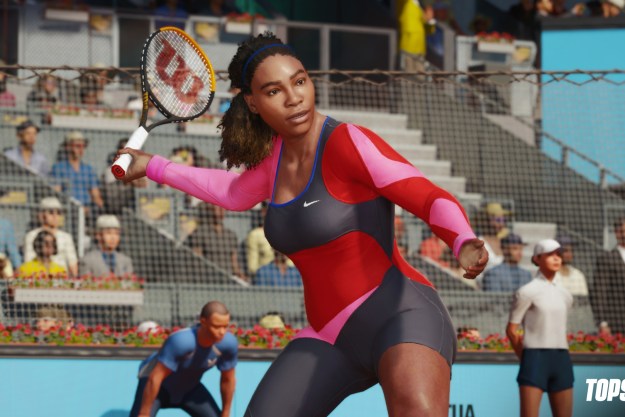
I’ll give you the same disclosure I gave Fable: The Journey creative director Gary Carr: I have never played a full Kinect game. I messed around with the early Project Natal demos back in 2009, but an actual, finished Kinect game? Never done it. I tell you this so you know that I went into my demo of Fable: The Journey last week with no expectations whatsoever.
Was I skeptical that an adventure game like Fable was suited to hands-free motion control and guided levels rather than free-roaming exploration? Definitely. Am I still skeptical? Sure. Is The Journey entertaining even in just a quick demo? Absolutely.
To catch you up, The Journey picks up 50 years after Fable III. Despite your revolutionary efforts in that game, Albion looks just as medieval and goblin-infested (or hob-infested as the case may be). This time around you play as Gabriel, one of the Dwellers, Albion’s fantasy version of the Romani people. Since he’s a fantasy gypsy, Gabriel doesn’t have the inherent magical skills that the fated heroes of past Fable games do. After getting separated from his family and swept up in immortal sorceress Theresa’s goings on, Gabriel receives a pair of magic gloves that let him toss all kinds of magic.

A swift tutorial through an ice and crystal covered cave introduces you to Gabe’s powers. It works like this: Raising your right hand and pushing forward will toss an energy ball. If you flick your right hand after throwing it, the ball will automatically whiplash and hit the nearest enemy. If you hold your right hand in place waving it back and forth, your energy ball becomes a much stronger fireball. Holding your right hand at your shoulder still will conjure an even more powerful spear to throw.
Raising your left hand and pushing will let you Obi Wan Kenobi it up and force push bad guys away. Holding your left arm out connects a magical tether to enemies letting you toss them around. This brings some nuance into fights. When you’re fighting against a bunch of skeleton warriors, the quickest route to victory is tethering them and popping off their limbs one by one. You can also block by holding your left arm up in front of you, natural as a shield. Dodging is just a matter of leaning right and left.

If that sounds like a lot to remember, it is, especially when a large group of enemies is bearing down on you. The Journey is best described as a cross between an old-fashioned lightgun game like Virtua Cop and a fighting game like Street Fighter. You have to pay attention to the environment directly in front of you while assessing what of your limited moves will best help you overcome your enemies. Both those styles of games require precision and quick decision making though.
Lionshead’s game impressively allows for both. When the moves didn’t work in the game it was almost always because I was rushing and not being specific with my motions. The Journey also allows for decent improvisation. The second level I played through was a mine where an enormous rock monster boss was waiting at the end. As you fought him, deflecting back giant rocks and tossing fire, skeletons would pop and advance. What do you do? Should I dodge to the far right and focus on the boss, or can I move fast enough to dismember these undead goons while also tossing boulders back at the boss? This sort of blend of physical challenge with classic video game problem solving delivers on that early promise of the Kinect.
At least in this sliver of the game. Carr told me during our demo that the game is 10 to 15 hours long. I played for a mere 20 minutes. The on-rails lightgun shooters and fighting games I compared The Journey to are brief games, played in short burst sessions, but Lionhead wants this to be a lengthy, deep adventure. It’s impossible to say how it stacks up in that regard based on this sample.
Is it funny like Fable? Couldn’t tell you. How’s the art? All I saw was a mine and a magic ice cavern. Throw in a forest and it would be every fantasy game ever. Does the action continue evolving or is it just a game of push and pull for 20 hours? Carr promised exploration areas but none were demoed.
Fable: The Journey was an impressive first experience with a complete Kinect game, but it has many questions to answer before it releases in October.
Editors' Recommendations
- Fable 4: release date, trailers, gameplay, and more
- The history of the Xbox
- Xbox exec attempts to explain Perfect Dark, Fable accounts on Twitter


